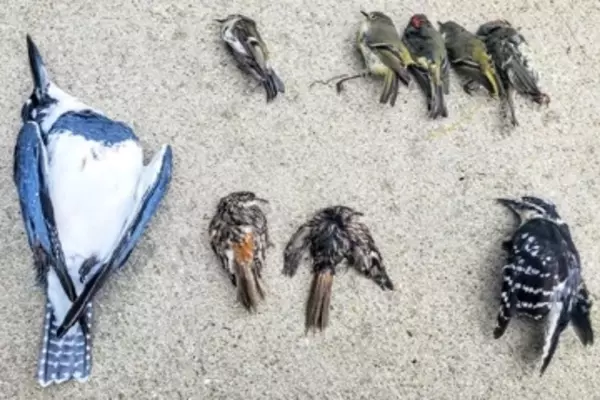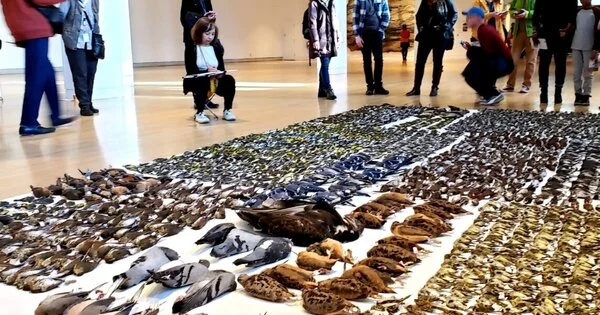Bird-window strikes are a significant problem that affects millions of birds every year. It is estimated that in the United States alone, between 365 and 988 million birds are killed each year due to collisions with windows. The problem is particularly severe in urban areas, where birds are attracted to reflective surfaces and can become disoriented by the surrounding buildings and lights.
According to a recently published study, citizen science has contributed significantly to our understanding of the scope of bird deaths caused by building and window collisions. However, the study concludes that such grassroots efforts require more buy-in from the government and industry, as well as better funding, in order to keep the pedal to the metal in their efforts to reduce bird-window collisions.
These conclusions stem from research by authors at 22 universities, non-governmental organizations, government agencies, and conservation organizations. Their study is published in the journal Frontiers in Ecology and the Environment. As examples, the study highlights the Lights Out Texas program in the United States, the China Anti-Bird Window Collision Action Alliance, and the Fatal Light Awareness Program (FLAP) in Canada. FLAP Canada has been at the forefront of this issue for 25 years and is the template for many of the newer collision prevention efforts.
Right now, collection of bird-window collision data is often piecemeal, with insufficient sampling at too few locations and times. We’re developing a formula through the Lights Out Texas project that we hope can be used anywhere to guide data collection and inspire local action.
Andrew Farnsworth
“There’s been a groundswell of public, conservation, and scientific attention to bird-window collisions in the last 5 to 10 years,” said lead author Scott Loss of Oklahoma State University. “Citizen scientists are leading the charge in raising awareness of this major threat to birds and advocating for bird-friendly structures and policies. These projects have a lot of potential to do more, but they need help, and more conservation organizations need to make collision reduction a priority. Conservation funding is always difficult, but perhaps even more so with this often-overlooked global issue.”
According to a 2014 study, anywhere from 365 million to nearly one billion birds are killed by window collisions in the United States alone each year. He claims that more than half of the data he used for that study came from citizen-science projects across North America.
The three programs highlighted in the new study share an important strategy: a diverse network of partnerships. By focusing on unique regional conditions and familiar birds, these projects also inspire local action. However, some significant obstacles must be overcome before significant progress can be made on a larger scale.

“Right now, collection of bird-window collision data is often piecemeal, with insufficient sampling at too few locations and times,” said Cornell Lab of Ornithology senior author Andrew Farnsworth. “We’re developing a formula through the Lights Out Texas project that we hope can be used anywhere to guide data collection and inspire local action. And we need a lot more data, especially from countries other than the United States and Canada.”
In 2018, researchers and students at Duke Kunshan University in China started surveying bird-window collisions, which led to the formation of the China Anti-Bird Window Collision Action Alliance in 2022. The Alliance is conducting a long-term survey to answer fundamental questions about the scope of China’s bird collision problem and to identify evidence-based solutions.
“Students and young people are definitely the driving force behind China’s collision prevention efforts,” said co-author Binbin Li, an assistant professor at Duke Kunshan University. “Our university is leading the national survey effort and the majority of those on our team are undergraduate students. They draft social media posts to recruit volunteers, prepare training materials, design survey forms, and much more. There’s been an increase in awareness of the problem, but there’s still a lot of work to do.”
“These grassroots programs are gathering data in order to inspire action,” Scott Loss explained. “Through science, education, and advocacy campaigns, the goal is to make communities more bird-friendly.”
“Unfortunately, finding birds killed by window collisions is a global, shared experience,” Farnsworth adds. “We have a tremendous opportunity to improve now that we are so interconnected. We still don’t know much about where, when, and how birds die. However, citizen science can make a significant and necessary contribution to reducing collisions worldwide.”
















